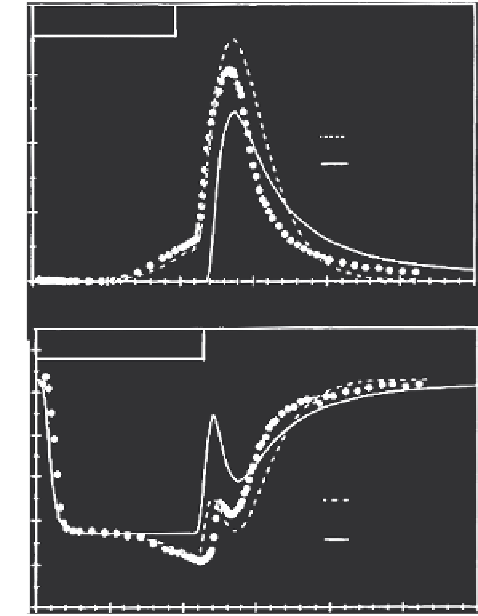Agriculture Reference
In-Depth Information
pulse. The first pulse (22.6 pore volumes) represents about 4% of the total
cation exchange in the soil column, and the second and third pulses (20.8
and 30.3 pore volumes) represent 4% and 6%, respectively. Selim et al. (1992)
postulated that applied Cd may occupy specific sorption sites on matrix sur-
faces. Therefore, irreversible Cd sorption could partly explain the fact that
only 80% of applied Cd was recovered in the effluent. For the Windsor BTCs
shown in Figure 7.9 (
C
o
= 100 mg L
-1
), the first pulse alone was equivalent to
30% of the cation exchange capacity of the soil column and perhaps resulted
in higher peak maxima due to Ca-Ca ion exchange.
Examples of transport behavior of Zn when variable ionic strength (or
C
T
)
conditions prevailed in the soil columns are presented in Figures 7.10 and 7.11
for two flow velocities (Hinz and Selim, 1994). Since the total concentration
4.0
Zn - Windsor
v
= 79.03 cm/d
3.0
Equal a�nity
RK
2.0
1.0
0.0
0
5
10
15
20
25
30
Ca - Windsor
6.0
v
= 79.03 cm/d
5.0
4.0
3.0
Equal a�nity
2.0
RK
1.0
0.0
0
5
10
15
20
25
30
V/V
o
FIGURE 7.10
Zn and Ca breakthrough curves in Windsor soil column at variable ionic strength. Predictions
were based on equal affinity (
K
1
= 1) and the Rothmund-Kornfeld (RK) equation. (From H. M.
Selim and M. C. Amacher. 1997.
Reactivity and Transport of Heavy Metals in Soils
. Boca Raton, FL:
CRC Press. With permission.)

Search WWH ::

Custom Search